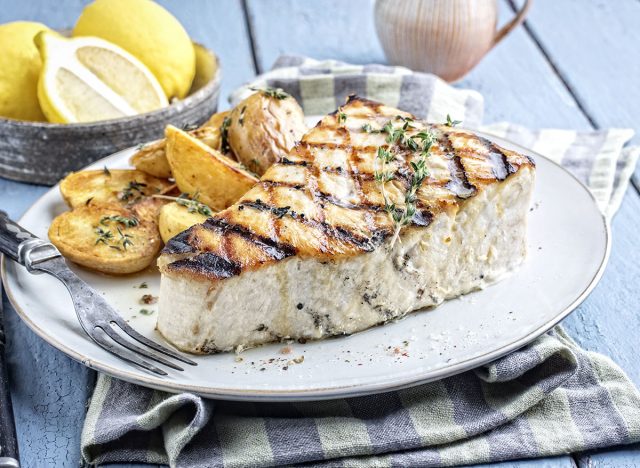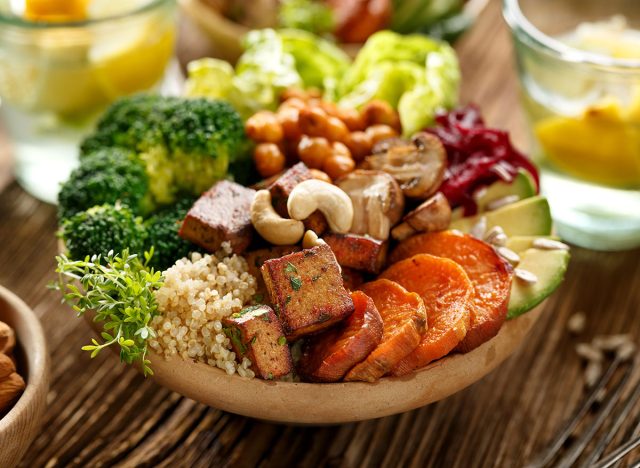4 Eating Habits to Boost Your Metabolism & Cut Chronic Inflammation

If you deal with inflammation, then you should be aware of the fact that how and what you eat can either make the problem worse. Conversely, the right diet can also help you reverse and reduce the painful effects of inflammation. In order to do the latter, you can take advantage of eating habits that will lower your C-reactive protein (CRP) value.
What is CRP? It happens to be a protein that is produced in the liver when inflammation flares up, according to the Mayo Clinic. The Cleveland Clinic also notes that the level of CRP in your body—more specifically, your blood—can indicate the presence of both infections and various autoimmune issues. Higher levels of CRP are also associated with metabolic issues such as upper-body obesity, hypertriglyceridemia, hypertension, abnormal glucose, and low HDL (aka the “good” cholesterol). This is why it’s so important to keep your CRP in check.
According to Johna Burdeos, RD, “[There are] are a few great ways to lower CRP, the marker for inflammation.”
With that in mind, check out the following beneficial eating habits that can help lower CRP and, in turn, help reduce your chances of having to face the painful side effects of inflammation.
Regularly eat seafood rich in omega-3s

The first suggestion Burdeos offers to keep your CRP on the lower side is eating seafood. Granted, it’s not just any fish, but specific choices like salmon, mackerel, anchovies, and herring which are all rich in omega-3s.
“Omega-3 fats are essential for optimal nutrition and are known to reduce inflammation by inhibiting pro-inflammatory reactions,” Burdeos tells Eat This, Not That!
While that certainly sounds ideal, Burdeos also notes that “reducing inflammation can help stave-off chronic conditions such as heart disease and diabetes.” That’s why she recommends “including omega-3, fat-rich seafood in your diet twice a week.”
Consume plant-based foods rich in omega-3s

“If fatty fish is not something you wish to eat, then you’ll need to eat other omega-3-rich foods—in the form of plant-based foods,” Burdeos says. “These foods are important to include whether or not you eat seafood because they offer a myriad of other nutritional benefits such as plant protein, fiber, and micronutrients.”
If you want to know what options you can choose from, Burdeos points out that “omega 3-rich plant foods include chia seeds, flaxseeds, and walnuts.”
“Others that include omega-3s but not as high as those mentioned are hemp seeds and omega-3 enriched meat and meat products such as eggs and dairy from grass-fed animals,” she adds.
Avoid fried foods

There are various reasons why you might want to avoid fried foods. However, in this case, Burdeos explains that “it is well established that fried foods can provoke inflammation.”
“[Fried foods] are typically cooked in partially hydrogenated oils and the high temperature for frying can increase their trans fat content,” Burdeos continues. “Trans fat is associated with increasing bad LDL cholesterol and lowering HDL cholesterol, thereby elevating your risk of heart disease.”
“The added sodium is also a concern as eating too much sodium is linked to risk of chronic conditions like heart disease and stroke,” notes Burdeos.
Furthermore, researchers from the Mount Sinai School of Medicine found that cutting back on fried foods could not only reduce inflammation but also improve the body’s defensive system.
Eat more fruits and vegetables

“Fruits and veggies are loaded with an array of nutrients—fiber, micronutrients, and antioxidants like vitamin C, anthocyanins, beta-carotene, and lycopene—that all work together to combat inflammation,” says Burdeos. “Since no one fruit or vegetable contains all the nutrition you eat, it’s important to get a variety in your diet to maximize your intake.”
“If you’re not good about including [fruits and vegetables] in your diet, consider easy ways to consume this food group: smoothie, salad kits, pre-cut fruits, and vegetables for snacks,” Burdeos adds.









